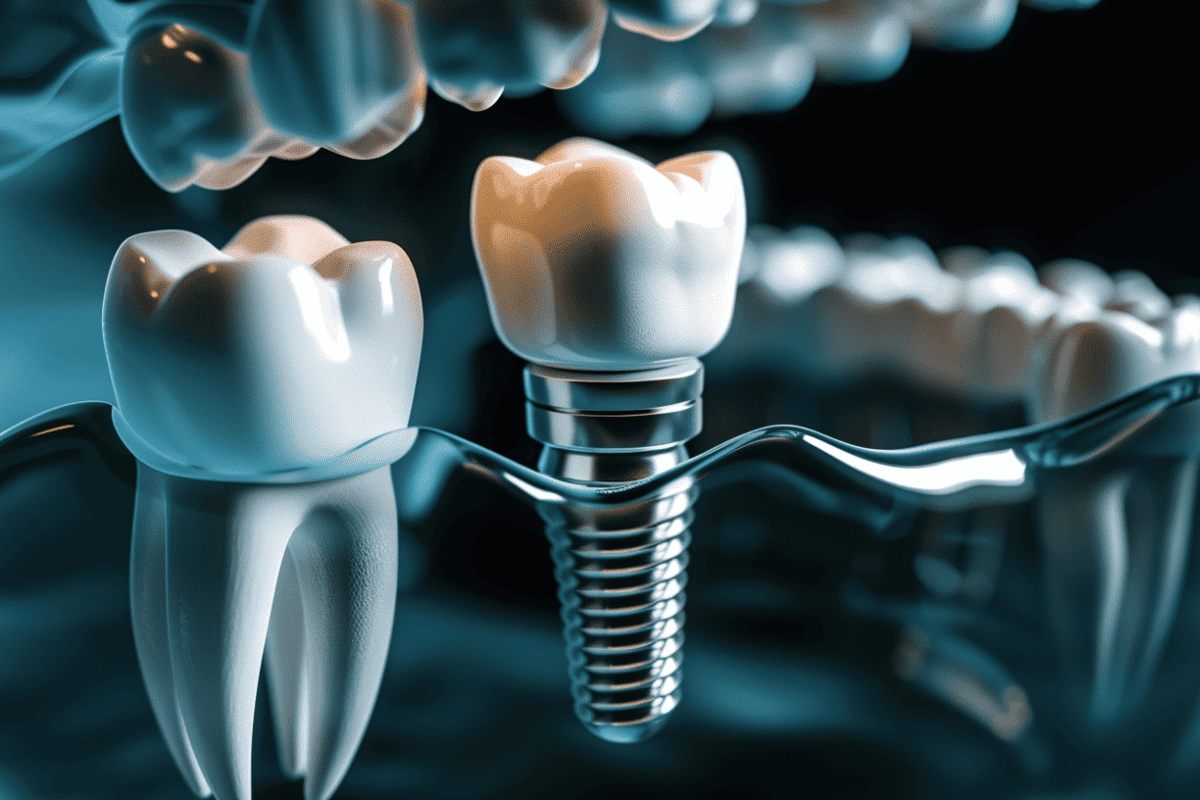Sometimes, gaps can open up between our teeth. Be it from a cracked tooth, a lost tooth, or movement over time. Dentists are able to bridge these gaps and keep your smile intact. They do this, using something called a ‘dental bridge’. This is sometimes called a pontic, but is more simply described as a ‘false tooth’. In this post, we will look at the benefits of the different types of dental bridges, how dental bridges are used, and how much dental bridges cost.
What are the different types of dental bridges?
Dental bridges can be made from a variety of materials, including gold and porcelain. However, the most widely used material for a dental bridge is porcelain. This helps it to blend in with your real teeth which is more aesthetically pleasing. In addition to the choice of materials, there are 4 different dental bridge types used under certain circumstances. Here, we outline each type:
1. The traditional dental bridge
The classic dental bridge involves a false tooth (or set of false teeth) being cemented onto supporting teeth in the mouth (known as the ‘abutment teeth’). They are held in place by a dental crown in the material of your choosing. You need to have natural teeth on either side of the gap in your teeth to use a traditional dental bridge.
2. The cantilever dental bridge
Cantilever dental bridges are similar but can be cemented in place next to just one natural tooth. It will still be held in place with a crown, but means it is possible to close a gap when only one natural tooth is available.
3. Maryland dental bridge
The Maryland dental bridge attaches to 2 natural abutment teeth either side of a gap, just like a traditional bridge. Unlike the traditional bridge, a crown is not used, and a framework of metal or porcelain is fitted to the backs of natural supporting teeth.
4. Implant-supported dental bridge
Rather than a crown or supporting framework, this type of bridge is supported with an implant. The implant takes the place of a missing tooth, making it possible to bridge gaps where natural teeth are lacking. This is the strongest type of bridge, but also the most complex. Typically, an implant-supported dental bridge will also require:
- Surgery to embed the implant/implants into your jawbone
- Surgery to actually put the bridge in place
Because of this, it can often take many months for this type of bridge to be completed. However, an implant is deemed to be a permanent solution. By way of comparison, the other types of dental bridge can need replacing anywhere from 5 to 15 years.
What do dental bridges do?
Dental bridges can close gaps in your smile caused by missing teeth. However, as well as being aesthetically pleasing they can also:
- Improve your chewing ability – chewing with equal force and without food getting stuck is easier without gaps in your teeth.
- Help with speech and enunciation – It can be hard to speak normally with missing teeth.
- Protect the shape of your face – missing teeth can cause bone loss from your jaw from where the tooth is missing.
- Ensure the rest of your teeth stay in their correct place – adjacent teeth are liable to move if a gap opens up.
- Help with longer-term dental hygiene – stopping teeth from moving out of place prevents issues with bite and hygiene.
How much do dental bridges cost?
You can expect a single false tooth in both traditional and cantilever bridges to cost in the region of $1,900-$5,000. Maryland bridges will usually be no more than $2,500 per pontic (false tooth) and start from as low as $1,500. However, an implant-supported bridge can range dramatically and will always be a large expense. Typically, this can fall between $5,000 and up to $15,000.
The price of a bridge can be affected by numerous variables. For example:
- If you need more than one false tooth to fill a gap
- How difficult it is to make the placement
- Where you live
- Additional dental hygiene issues
- What materials are used
Summing up
If you have lost a tooth, or even a number of them, there are numerous options available to you. It is well worth speaking to your dentist about what might be right for you. Be it improving the look of your smile or ensuring good dental health in the long run. Dental bridges could be the solution you are after. Whilst they are not cheap, they make it easier to promote good dental hygiene and come with accompanying health and beauty benefits.
This is a sponsored post
Digital Health Buzz!
Digital Health Buzz! aims to be the destination of choice when it comes to what’s happening in the digital health world. We are not about news and views, but informative articles and thoughts to apply in your business.


